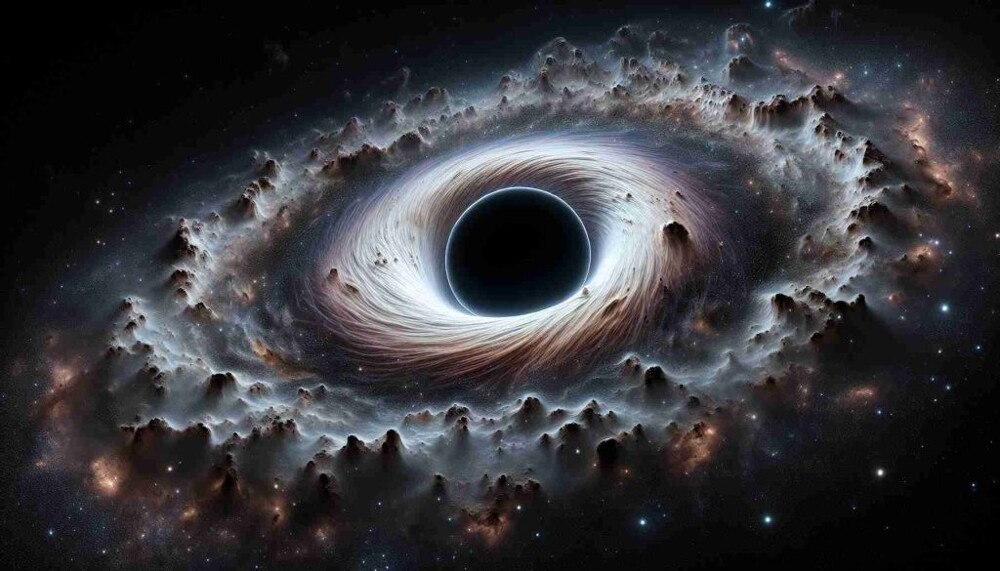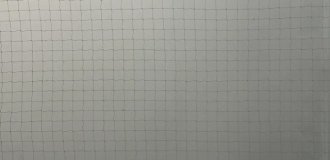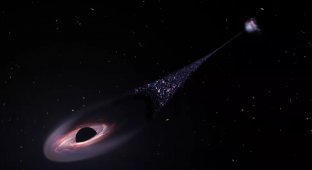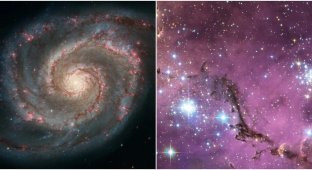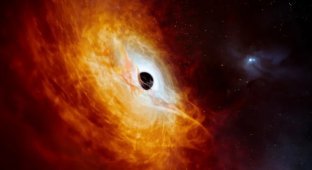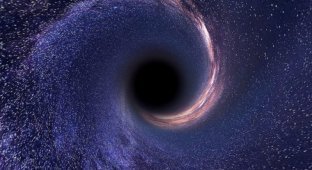A black hole 33 times more massive than the Sun was found in the Milky Way (6 photos + 1 video)
Black holes are the most dangerous objects in the Universe. They have the power to devour an entire planet. Scientists from France have discovered another such object in our galaxy, and from an astronomical point of view it is extremely close to us. 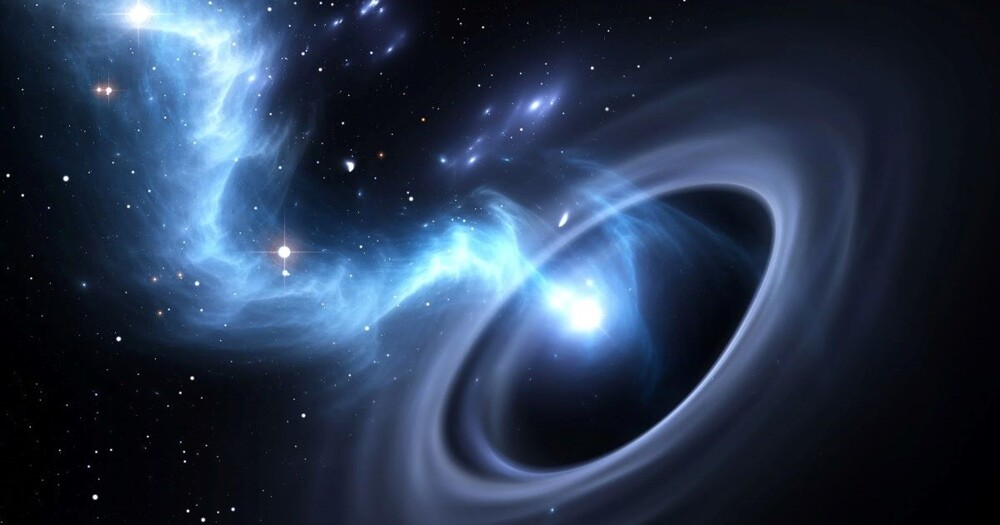
Named Gaia BH3, the black hole is located 2,000 light-years from Earth in the constellation Aquila. This makes it the second closest to our planet after Gaia BH1, which is located about 1,500 light years away. 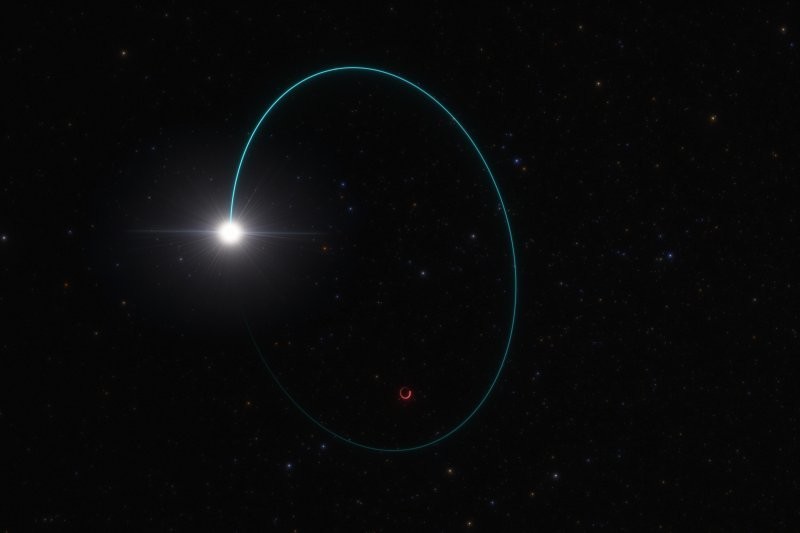
A star orbiting a black hole (red)
However, Pasquale Panuzzo, an astronomer at the Paris Observatory, assures that there is “no reason to be afraid.”
"The black hole is close on the scale of our galaxy. But it is located at a distance of 2000 light years, 500 times further than Proxima Centauri, and will not come closer to us in the future," the scientist explained.
Gaia BH3 is in a "binary system" consisting of a black hole and a star, which is quite rare.
Interestingly, the star revolves around the black hole, as if swinging in orbit. Its movement was monitored for several years using the European Space Agency's Gaia space telescope, located about 1.5 million km from Earth. 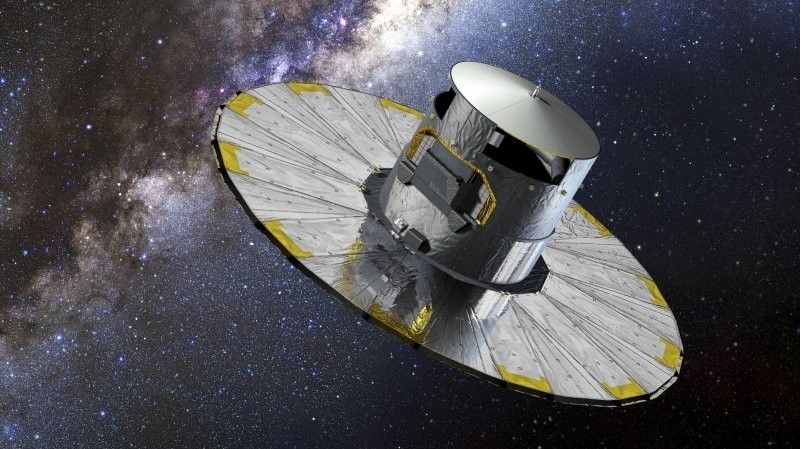
European Space Agency Gaia Telescope
Data from other telescopes, including the European Southern Observatory in Chile, confirmed that the mass of the black hole is 33 times the mass of the Sun. 
Equipment in the Atacama Desert in northern Chile
Nevertheless, Gaia BH3 still ranks second in size in our galaxy, behind Sagittarius A*. This supermassive black hole is located at the center of the Milky Way and has a mass of about 4 million Suns.
But Sagittarius A* is located at a distance of 26,670 light years from Earth, that is, 13 times further than Gaia BH3. 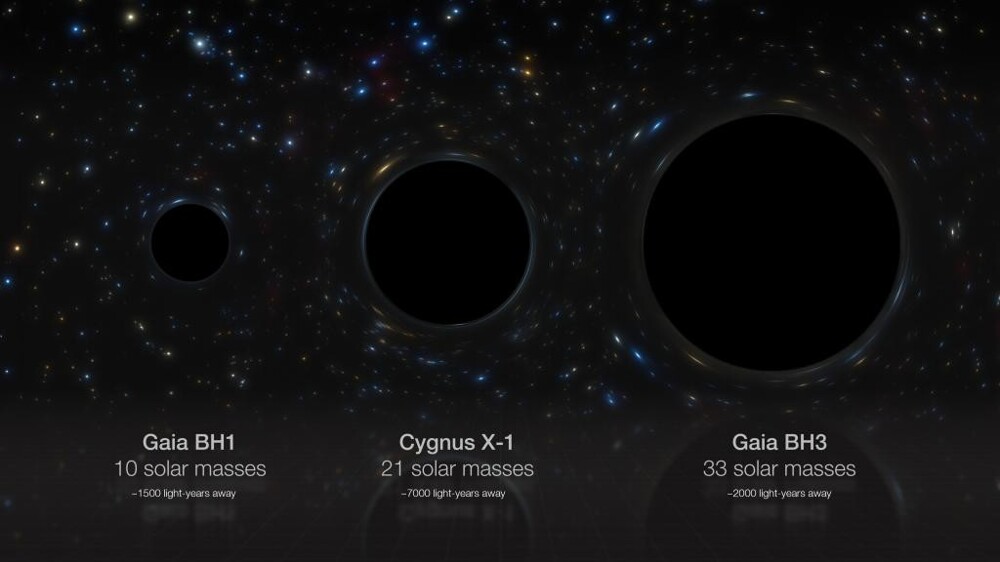
Comparison of Gaia BH1 with Cygnus X-1 and Gaia BH3
The question of how this binary system arose will be the subject of future research.
“The classic scenario is that the system consisted of a massive star (which collapsed to form a black hole) and a low-mass star (the one we see today). Or the low-mass star was captured by the black hole after its birth,” commented Panuzzo.
Earlier this year, another team of astronomers discovered the brightest and hungriest black hole yet. J0529-4351 has the mass of 17 billion Suns and absorbs the equivalent of a star's mass every day.
